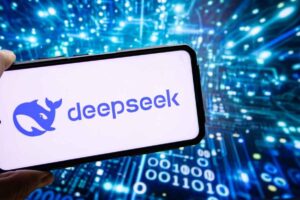OpenAI Aims to Empower Its ‘Open’ AI Model by Leveraging Cloud-Based Model Support

OpenAI’s Upcoming Open AI Model: What to Expect
Introduction to the OpenAI Model
OpenAI is preparing to launch a new artificial intelligence system that marks a significant shift in its approach to accessibility. This model will be available for free download, rather than being restricted behind a costly API. According to a report from TechCrunch, OpenAI is aiming for a release in early summer, positioning it to compete with other open AI models developed by companies like Meta and DeepSeek.
Key Features of the OpenAI Model
One of the standout features of this new open model is its advanced "reasoning" capabilities. This unique aspect is thought to enhance the model’s performance, enabling it to better tackle complex queries. During discussions with developers from the open-source AI community, OpenAI CEO Sam Altman introduced an interesting concept referred to as the “handoff” feature.
Handoff Feature Overview
- Integration with Cloud Models: The handoff feature aims to bridge the open model with OpenAI’s cloud-hosted models. This feature could enhance the model’s ability to retrieve information and handle complex tasks.
- API Access: When operating within the open model, users may be able to make API calls to access OpenAI’s larger models. This can provide a significant computational advantage, although details on specific capabilities—like web search or image generation—remain unclear.
Development and Community Engagement
OpenAI has actively sought feedback from the developer community as it shapes the final product. The idea for the handoff feature emerged from discussions during OpenAI’s developer forums, indicating that the company values input and collaboration from external AI developers.
Benefits of Community Collaboration
OpenAI’s engagement with the open-source community serves multiple purposes:
- Improved Model Performance: Input from experienced developers can lead to better features and capabilities in the model.
- Ecosystem Expansion: By fostering a relationship with open-source developers, OpenAI can potentially draw more users into its ecosystem, enhancing overall usage and revenue prospects.
Comparison with Existing Models
This new open model is being designed from the ground up, rather than being a repackaged older version. While it may not surpass OpenAI’s existing models like o3, it is expected to outperform models such as DeepSeek’s R1 in certain benchmarks.
Implications for Users and Developers
While many aspects of this open model remain uncertain, such as potential pricing structures and usage limits, there are some anticipated implications:
- Greater Accessibility: By making a powerful AI tool freely available, OpenAI is lowering barriers to entry for developers and researchers.
- Collaborative Innovations: The open-source model encourages collaboration, which may lead to innovative uses and applications that enhance the overall ecosystem of AI tools.
Technical Aspects and Future Considerations
The exact operation and effectiveness of the handoff feature are still in development and may evolve before the public release. Developers and potential users are keenly watching how OpenAI integrates its open model with broader cloud-based capabilities, assessing how those enhancements can be leveraged in diverse applications.
Overall, OpenAI’s upcoming open AI model represents a significant step forward in the quest for accessible, high-performance AI technologies, with features that could redefine how various AI applications function in both personal and professional realms.





